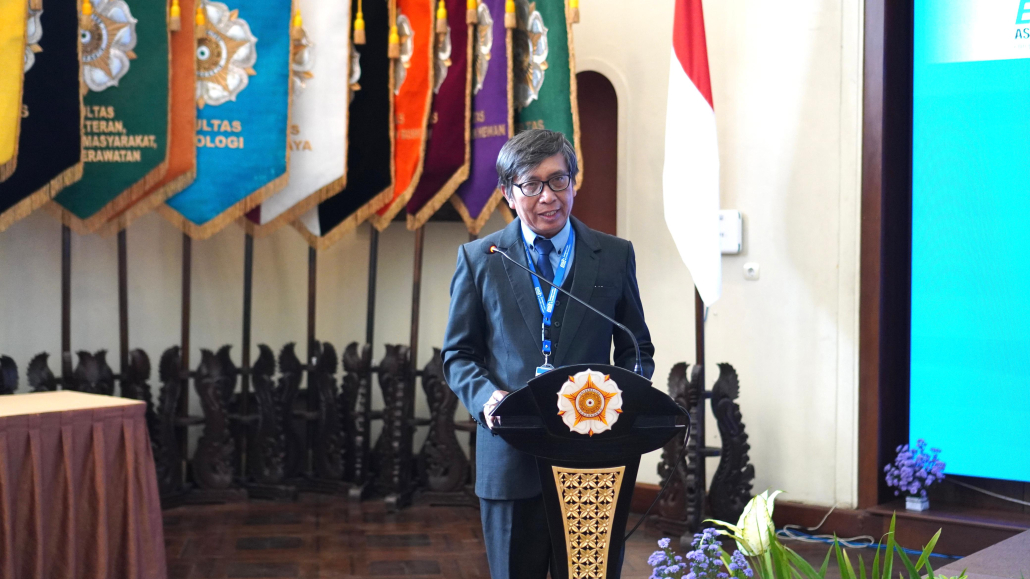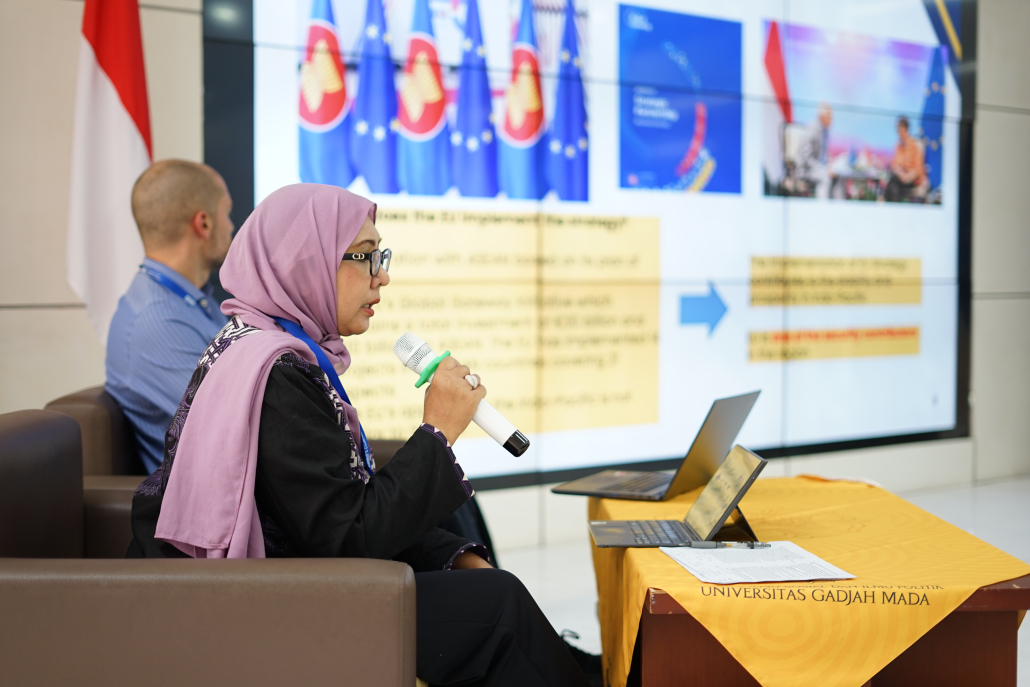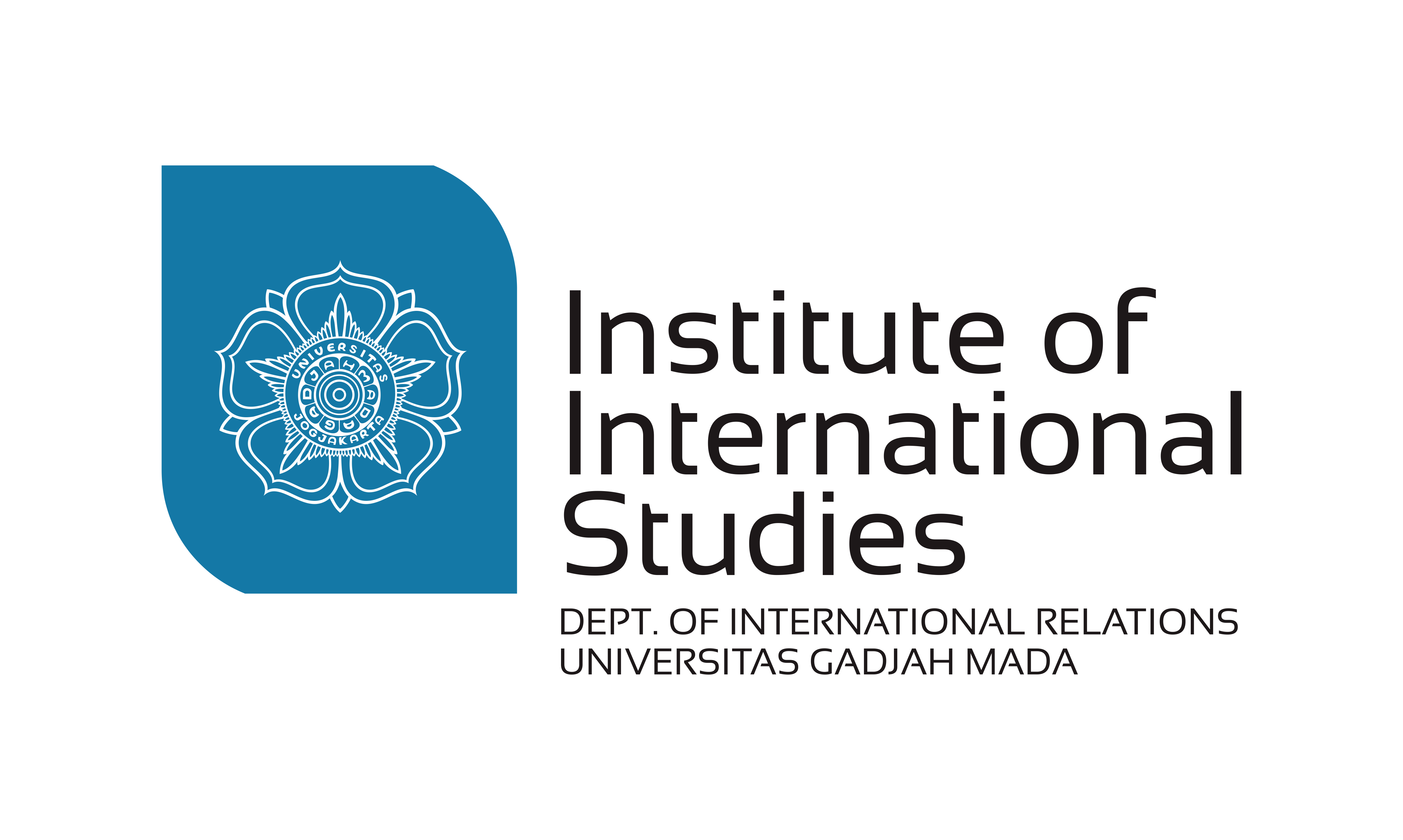[IIS RECAP] Revisiting EU-Asia Pacific Relations through the EUSAAP Conference 2024 with IIS UGM and ICES
Yogyakarta, 21 May 2024 – In order to maintain security, stability, and prosperity in the Asia Pacific region, the European Union continues to strengthen its cooperation framework with countries in the region. It is reflected in the concrete action of the European Union initiated in 2021 through a cooperation map in seven priority sectors of cooperative relations, covering aspects of welfare, green energy transition, maritime governance, digital governance and partnerships, connectedness, security and defense, and human security. Aligning with the objectives of the European Union cooperation policy, the European Union Studies Association (EUSA), in collaboration with the Indonesian Community for European Studies (ICES) and Institute of International Studies, Department of International Relations, Universitas Gadjah Mada (IIS UGM), held the EUSAAP Conference 2024. This conference aims to become a strategic forum for academics to exchange knowledge about innovations, conditions, and observations regarding changes in the foreign policy landscape of the European Union and countries in the Asia Pacific region from interdisciplinary perspectives.

The conference host, Mr. Muhadi Sugiono, delivered his welcoming speech at the opening session in Balai Senat, Universitas Gadjah Mada.
The EUSAAP Conference 2024 began with an opening session at Balai Senat, Universitas Gadjah Mada. This session included opening remarks from Mr. Muhadi Sugiono as the conference host, Prof. Martin Holland as EUSAAP Secretary General, and Prof. Dr. Wening Udasmoro as Vice Rector for Education and Learning of Universitas Gadjah Mada. The keynote speech and presentation were delivered by Mr. Stéphane Mechati, EU Delegation to Indonesia and Brunei Darussalam. The opening session continued with a roundtable discussion, which delved deeper into the main theme of the conference, Revisiting EU-Asia Pacific relations, led by Dr. Luqman Nul Hakim.
According to Prof. Dr. Wening Udasmoro, Vice Rector for Education and Learning of Universitas Gadjah Mada, the EUSAAP Conference 2024 serves as a significant platform for revisiting the European Union and Asia Pacific relations in the context of current urgent concerns. Prof. Dr. Wening Udasmoro emphasized that the conference serves not only to discover new strategies in partnerships but also to continuously evaluate the readiness and dedication to building strong partnerships between the European Union and Asia Pacific.
Reflecting on that urgency, Prof. Dr. Wening Udasmoro stated that the EUSAAP Conference 2024 is an important forum to produce inclusive knowledge for reshaping the global governance order. “As academics, we are crucial in providing nuances and perspectives on global governance. We are the beacon to produce inclusive knowledge that will be used for shaping or reshaping global governance. Hence, your participation in this conference would be highly appreciated,” said Prof. Dr. Wening Udasmoro.
In a short interview with the EUSAAP President, Mr. Muhadi Sugiono highlighted the dynamic relations between the European Union and Asia Pacific. The relationship between the two parties is considered promising because of their mutual interests. Nevertheless, the obstacles are reflected in the need to harmonize the multicultural condition of the European Union and countries in the Asia Pacific region. Therefore, efforts to enhance the relations between the European Union and Asia Pacific are crucial in order to foster security stability and encourage positive growth. “We need to build better communication and understanding that will create better relations. Hence, the real partnership can be achieved meaningfully,” Mr. Muhadi Sugiono explained.
The significance of the EUSAAP Conference 2024 towards the European Union and Asia Pacific relations was also delivered by Prof. Martin Holland, EUSAAP Secretary General. This conference serves as an essential measure to maintain the cooperation between the European Union and countries in the Asia Pacific region, along with the global geopolitical transition. It is interesting to see how experts, diplomats, and young postgraduates discussed their research. Indonesia’s rise as a global economic and cultural center has encouraged the European Union to recognize the diversity of the Asia Pacific region. In this regard, the European Union has attempted to change its approach towards the Asia Pacific region to create better political-economic policies.
In line with Prof. Holland’s statement, the Vice Head of the EU Delegation to Indonesia and Brunei Darussalam, Stéphane Mechati, underscored the importance of a forum to bring together diverse perspectives and interests from Indonesia and the European Union. Not just propaganda from a single party, but the European Union wants to build dialogue and reciprocal relations, establishing mutually advantageous partnerships for the European Union and the Asia Pacific Region.

One of the participants presented their research in the panel presentation and discussion.
Following the end of the opening session of the EUSAAP Conference 2024, the conference proceeded with a panel presentation and discussion held at the Faculty of Social and Political Sciences, UGM. Around 40 academics and researchers, both undergraduate and postgraduate from various countries, attended the panel presentation session. In addition to presenting their research findings, the academics also had the chance to exchange opinions and provide comments on the study related to the interactions between the European Union and Asia Pacific.
Written by: Albert Nathaniel & Anggita Fitri Ayu Lestari
